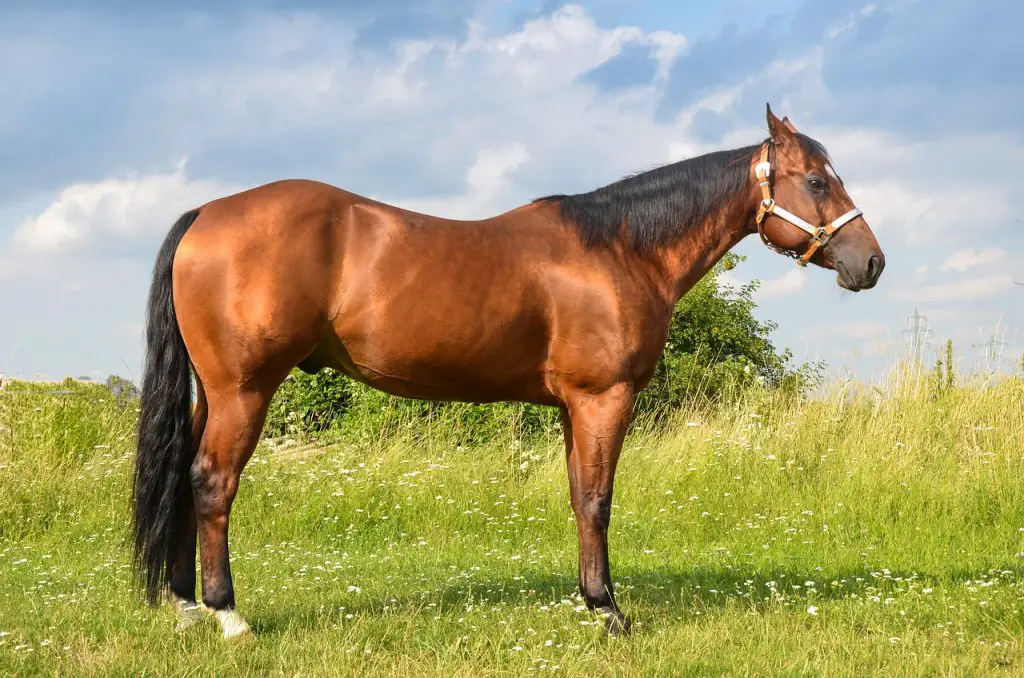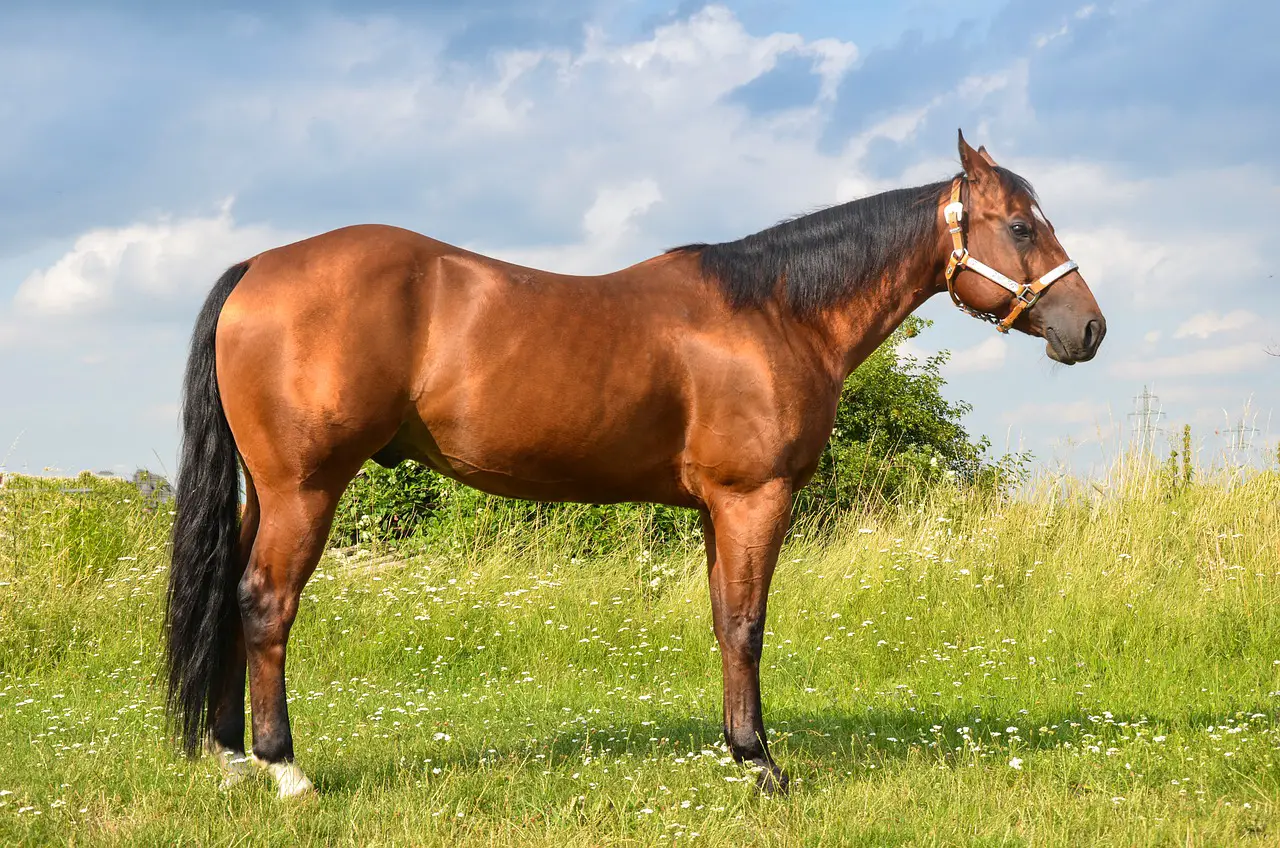Last Updated on February 28, 2022 by Allison Price
The term “sorrel horse” is used to describe horses that have a chestnut-colored or red coat but no black pigmentation. Horse associations and horse communities debate the meaning of the term. Some prefer to distinguish chestnut-colored horses and sorrels, while others see them as one and the exact same.
This is the ultimate guide to the topic. This article will help you to understand the red-colored horse classification.
What Do They Look Like?
Sorrel Quarter Horse
You may now be asking, “What is a sorrel horses and how do they look?” This is a very hot topic, and you are not the only one asking! Let’s get to the bottom of this question.
This horse category refers specifically to their color.
Sorrel horses are physiologically able to be strong, weak, and short. They can be male or female and of any age. They can also be male or female and any age.
You can picture a standard horse that has a little bit of red throughout its body with no black accents. This is a sorrel.
What Color is a Sorrel Horse?
This is the question that sparks a heated debate in the horse community. This dispute is primarily between the United States of America and the United Kingdom.

The term is used to describe any horse of red color by Americans. Horse riders, racers, breeders, and horse owners from the UK tend either to distinguish chestnut horses form sorrels, or to reject the term sorrel completely.
Scientifically, the color genetics for horses are not different. Both these types of horses can have the red hue due to recessive gene e.
Sorrel is a term that can be used to describe all horses with red-colored coats.
What is a Red Coat in Horses?
What colors fall within the red spectrum? It can be hard to identify the colors in this category, as the horse’s coat color varies depending on many factors.
The way the horse’s hair is cut can have an impact on its tone. Their hair may change in color depending on how much they spend outside and the temperature of their area. Their environment and diet can also affect the color of their hair.
These factors increase the red spectrum and allow for thousands of colors within the sorrel group.
Most sorrels are distinguished by their copper, brownish, and chestnut colors. There are many shades in between.
Another important factor in determining whether a horse is a sorrel or not is its ability to have black markings and pigmentations. A horse with a black tail and mane will not be considered a sorrel. It is simply chestnut brown, red, or something similar.
How do Horse Associations classify red horses?
The American Quarter Horse Association uses sorrel as well as chestnut to describe horses with red coats and no black markings.
The Jockey Club does not mention the term when referring horses of red tones. Instead, they refer to them by their chestnut colors.
It is up to the individual to decide what the meaning of the term is. Your perspective will likely be influenced by where you are on the other side of the pond.
What Breed Is a Sorrel Horse of?
Sorrel horses are, unbelievably, the most common type among all registered horses in American Quarter Horse Association.
This could be because the distinguishing factor is simply the horse’s color.
Some breeds are more prone to sorrels than others. Sorrel horses are often found amongst breeds like the Belgian Draft Horse and the Racking Horse. The Chincoteague Pony, Tennessee Walking Horse and many others that we will detail later.
Sorrel Horse Breeds
Let’s look at some particular breeds of sorrels to help you spot them when they appear, regardless of their size, shape, or style.
1. Belgian Draft Horse
This breed of horse, as you probably guessed, is from Belgium, the land of beer, waffles and chocolates.Belgian Draft Horses Many horses have reddish-colored coats and are therefore known as sorrels. These horses can appear lighter because many of them were interbred with horses in white or grey colors during the 1920s when color-specific breeding became popular.
2. Argentine Anglo Horse
The breed was born out of a desire to have a sport horse. Breeders started mixing Argentine Crillios and English thoroughbred stallions fifty years ago to create the perfect horse for Polo.
Many reddish-colored Argentine Anglo horses will be running around the Polo Field. They are easily identifiable by their strong and impressive physiology. Their chestnut color is another reason to be noticed.
3. Racking Horse
The Racking Horse is an American classic. This breed is often referred to as the “model horse”. This horse is what you see in movies and paintings. The Racking Horse is graceful, strong, and beautiful.
There are many colors available for this breed. The sorrel horse’s chestnut color is the most prominent, along with the bay and black hair.
4. American Paint Horse
The American Paint Horse’s roots can be traced back to 1519, when Hernando Cortes, a Spanish explorer introduced the breed to America.
Their two-tone coloring can distinguish them. The white tones will always be the predominant hue, while the other can be any of the common colors such as the reddish or brown of the sorrel.
An American Paint Horse might have white markings, or hair with a mix of red and white. Their name comes from the large spots on their bodies that resemble paint splatters.
5. Bavarian Warmblood
This breed was created in response to the need for strong sport horses in Southern Germany in the 1960s.
They are strong and can be found in one solid color, such as red, copper, or chestnut.
6. Chincoteague Assateague Pony
Another note: The Chincoteague Assateague pony is a far lesser sporting star. They are considered ponies if they have less than 14 hands. This is the cut-off for horses and ponies.
These stocky, short ponies roam free on Assateague Island. It is an unrestricted area off the coast Virginia’s Atlantic Ocean. Many of them are reddish in colour.
7. Tennessee Walking Horse
This breed is known for its distinctive “running walk”, which is a unique trot that is unmatched by any other horse breed.
The Tennessee Walking Horse originally was bred for use on American plantations during the eighteenth-century. Because of their distinctive strut, they have become a favorite for leisure riding and being showcased at Western events.
They come in a variety of colors, including red.
8. Sella Italiano
The Sella Italiano is being bred by the Italian government. The initial goal was to breed a horse comparable in size to the English.
The Sella Italiano is known for their noble stature and how naturally slim and muscular they are. Their coats can be either red, black or bay.
9. Mountain Pleasure Horse
This American breed can be found in the Appalachian Mountains. Its origins can be traced back to over one-hundred eighty years ago. They are the decedents of American settlers’ horses.
The Mountain Pleasure Horse breed is a calm and sturdy horse that can be used for many purposes. Their coats are often chestnut-colored.
How are They Bred?
It is the recessive genetic or, as some call it, “red factor”, that gives a sorrel mare its red color.
What does this all mean? This means that the horse is born with two red genes. Without them, it wouldn’t be red. The other gene would take over.This horse color is common because of the fact that offspring from two red-colored horses will always have a red or a shade of red coat.
How do you get one?
A sorrel horse can be purchased in the same way as any other horse.Online marketplaces like equinenow.com offer a wide range of horses at varying prices.
This site lists breeds of all sizes, prices, and ages. This site allows both individual and commercial horse owners to list their disputes on such marketplaces as this.
These horses can also be purchased in an older-fashioned way. You might be able to find one at a farm or stable that sells animals.
What is the cost of these products?
As with all other colors of horses, the price range for sorrel horse prices can vary.
Depending on how hard and where you look, you may find a horse for as little as $100 or even more.
The average price of a trail sorrel or chestnut mare is around $5,000 These are the main factors that influence price fluctuations:
1. Breeding
The horse’s bloodline is an important determinant of a horse’s cost. This could even outweigh all other factors.
If a horse is bred from a show-winning mare but has no special qualities, it will still likely cost a lot.
How is this possible? The horse market is dominated, perhaps more than any other animal type, by the value and possibility of superior genetics.
Even if the sorrel isn’t extraordinary in stature and ability, its grandparents or parents could make it a nice sum.
2. Age and Condition
When it comes to horse price, the next factor is its age and condition. Horses are between seven and fourteen years old at the prime age. The average horse lives for twenty-five to thirty-years.
An older horse will generally be less expensive. This will depend on the horse’s condition. A horse in its 20s with exceptional mobility and great movement will still be a costly investment.
3. How well-trained and able the horse is
As you might expect, horses bred for racing and shows will have significant differences in their prices compared to horses bred for riding and petting zoos.
For obvious reasons, those with special training and training in particular areas will be more expensive than those who do not have these abilities.
4. Health
The health of the sorrel and chestnut is also important. Before agreeing to terms of sale, it is a good idea to have your horse examined by a veterinarian.
Horses with injuries or illnesses can have a negative impact on their ability to move, their longevity, and their genetics. It could also cost you a lot in medical bills.
Horses with minor health problems can still be very functional, especially if they are just for pleasure.
Time to Hit the Trail
They are admired for their magnificent beauty and commonality among many horse breeds.
Although the term “sorrel” may not be widely accepted, it refers to any horse that has a reddish-colored coat determined by their “red factor” genes.
To be considered a sorrel, the horse must have a red color and not have any black pigmentation.There are many breeds of horses that can be called sorrels and chestnuts. Prices vary depending on determining factors like age, bloodline and training.
A sorrel horse can be a great choice, whether you are looking for a show-stopping mare with an amazing equine color or a companion to ride the trails with.


